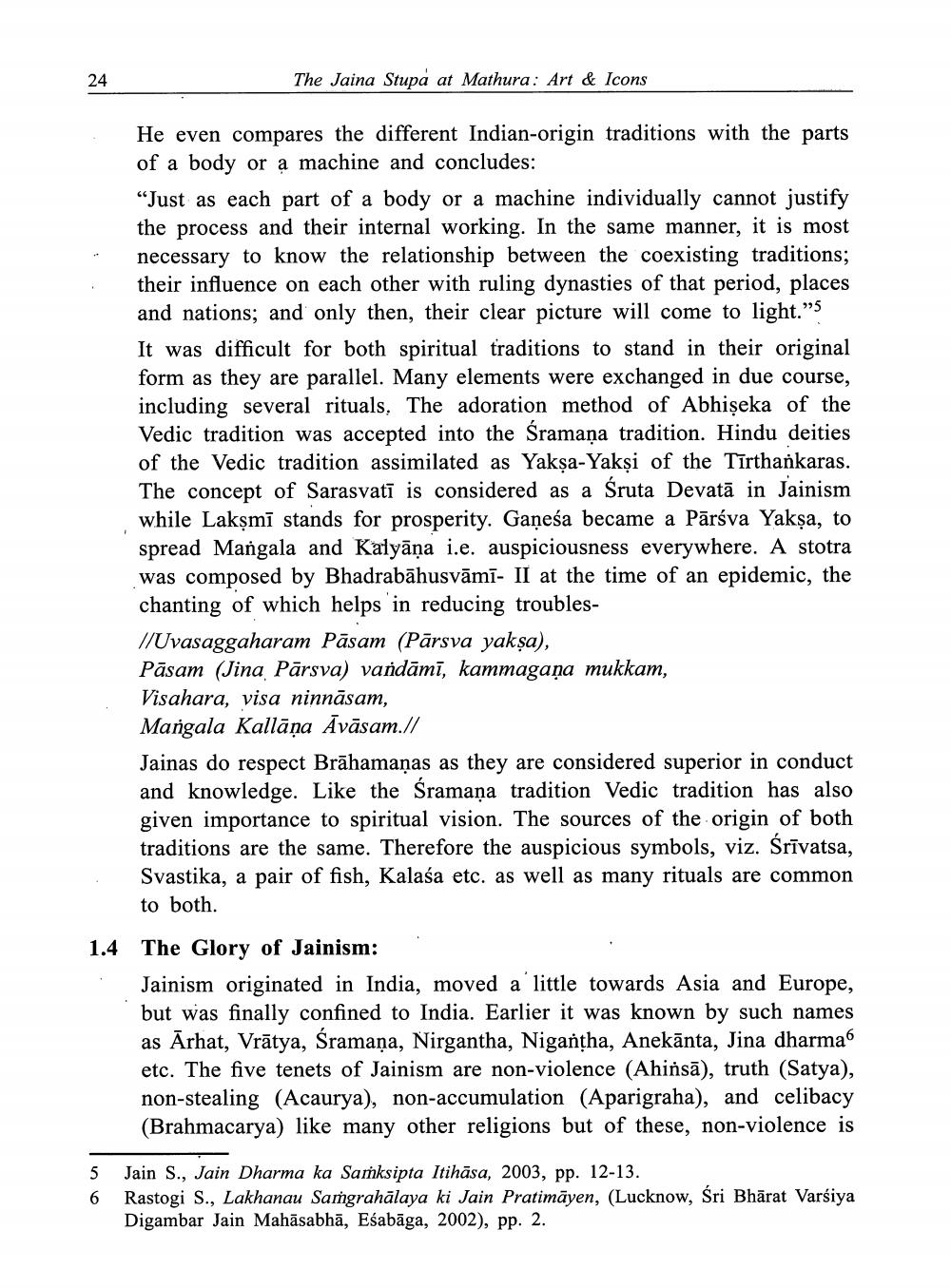________________
The Jaina Stupa at Mathura: Art & Icons
He even compares the different Indian-origin traditions with the parts of a body or a machine and concludes: “Just as each part of a body or a machine individually cannot justify the process and their internal working. In the same manner, it is most necessary to know the relationship between the coexisting traditions; their influence on each other with ruling dynasties of that period, places and nations; and only then, their clear picture will come to light.”S It was difficult for both spiritual traditions to stand in their original form as they are parallel. Many elements were exchanged in due course, including several rituals. The adoration method of Abhiseka of the Vedic tradition was accepted into the Sramana tradition. Hindu deities of the Vedic tradition assimilated as Yaksa-Yaksi of the Tīrthankaras. The concept of Sarasvati is considered as a Sruta Devatā in Jainism while Laksmī stands for prosperity. Gaņeśa became a Pārśva Yakşa, to spread Mangala and Kalyāņa i.e. auspiciousness everywhere. A stotra was composed by Bhadrabāhusvāmī- II at the time of an epidemic, the chanting of which helps in reducing troubles//Uvasaggaharam Pāsam (Pārsva yakşa), Pāsam (Jina Pārsva) vandāmī, kammagaņa mukkam, Visahara, visa ninnāsam, Mangala Kallāņa Āvāsam.// Jainas do respect Brāhamaņas as they are considered superior in conduct and knowledge. Like the Sramana tradition Vedic tradition has also given importance to spiritual vision. The sources of the origin of both traditions are the same. Therefore the auspicious symbols, viz. Śrīvatsa, Svastika, a pair of fish, Kalasa etc. as well as many rituals are common to both.
1.4
The Glory of Jainism: Jainism originated in India, moved a little towards Asia and Europe, but was finally confined to India. Earlier it was known by such names as Ārhat, Vrātya, Śramaņa, Nirgantha, Nigantha, Anekānta, Jina dharma etc. The five tenets of Jainism are non-violence (Ahinsā), truth (Satya), non-stealing (Acaurya), non-accumulation (Aparigraha), and celibacy (Brahmacarya) like many other religions but of these, non-violence is
5 6
Jain S., Jain Dharma ka Saṁksipta Itihāsa, 2003, pp. 12-13. Rastogi S., Lakhanau Samgrahālaya ki Jain Pratimāyen, (Lucknow, Sri Bhārat Varsiya Digambar Jain Mahāsabhā, Eśabāga, 2002), pp. 2.




